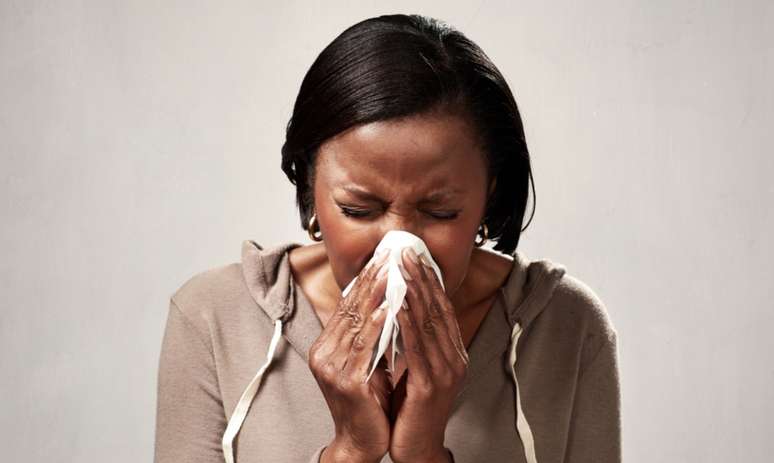The autumn and winter seasons represent the ideal scenario for the spread of respiratory diseases and infections such as tonsillitis
Each year, the fall and winter seasons contain the greatest number of cases of viral infections that affect the ability to breathe well. The drop in temperature and the dry climate, characteristic of this season, favor the spread of viruses with greater intensity. This leads to diseases that especially affect the upper airways, i.e. nose, ears and throat.
Most common autumn and winter diseases
The president of the Brazilian Academy of Rhinology (ABR) and member of the Brazilian Association of Otolaryngology and Head and Neck Surgery (ABORL-CCF), Otávio Piltcher, explains that influenza (flu virus) and the common cold (rhinovirus, virus respiratory syncytial), etc.) are the main viral diseases of the period. Even Covid-19, a consequence of the Sars-CoV-2 virus, could maintain a high incidence during the season.
“Transmission occurs more easily in this period due to the need to live in less ventilated environments to stay warm. Furthermore, the low relative humidity of the air, the more extreme it is, increases the concentration of pollutants. This makes it even more effective correct functioning of the respiratory system”, explains the specialist.
In cold seasons, cases of pharyngotonsillitis, which is an infection of the pharynx and tonsils, are also common. The condition causes sore throat, fever and swelling of the lymph nodes in the neck, popularly called the tongue. Furthermore, there is an increase in attacks of allergic rhinitis and rhinosinusitis.
Respiratory viruses, in turn, cause nasal congestion, difficulty breathing, cough, headache, fever and general malaise as the main symptoms. However, they can also develop into other problems.
Furthermore, in situations of sudden temperature changes, nasal functionality can be compromised, reducing the immune defenses, responsible for the body’s defenses. This naturally makes health more fragile, becoming a gateway to disease. The result of this combination of factors is an increase in seeking medical care and hospital admissions.
“In many cases there are aggravating factors. These diseases can lead to other complications, due to the viruses themselves or bacteria. This is the case with acute otitis media (inflammation of the ear), acute rhinosinusitis (sinusitis), bronchitis, of pneumonia, among others,” adds the doctor.
Children are more sensitive
The president of the Brazilian Academy of Pediatric Otorhinitis (ABOPe), Rodrigo Pereira, points out that children are the ones who suffer the most during autumn and winter.
“Children’s immune systems continue to develop, which means they have less experience than adults in fighting viral infections. In addition, they attend nurseries, nurseries and schools, where close contact with other children and the exchange of toys. This facilitates the spread of the virus virus, especially those that spread through the air or by direct contact”, he explains.
Most children who have a cold or flu develop ear infections, ear infections, which cause pain in the region. The problem is so widespread among this population that, according to medical studies, experts estimate that approximately 70% of children will have an episode of this type before the age of five.
“Like otitis, adenoiditis is also a sequential disease that appears as a complication of viruses. A swelling of the adenoid, also popularly known as the ‘spongy flesh’ of the child, occurs, which may be accompanied by fever, formation of yellow-green phlegm and nasal obstruction,” informs the doctor.
Preventive measures
For children or adults, one of the most effective prevention measures is immunization against influenza, as well as keeping vaccination coverage up to date by age group, which provides protection from other diseases.
“Frequent hydration, healthy eating and hand hygiene are also very important, as well as the use of masks by professionals and patients who present any signs and symptoms such as fever, sore throat, runny nose , cough, nasal obstruction, hoarseness,” advises Pilcher.
Important treatment and care
In the presence of any of these signs and symptoms, management with common analgesics and antipyretics is initially indicated. However, depending on the intensity and duration of the disorders, the specialist recommends consulting your doctor for the correct diagnosis and differentiation between viral conditions, with continued treatment, or bacterial complications, where antibiotics may be indicated.
The president of the ABR emphasizes that the possibility of prescribing antibiotics by healthcare professionals must be limited to specific conditions linked to bacterial pathologies. “These drugs have no role in the treatment of viral infections nor do they prevent complications. Their indiscriminate use is more associated with adverse effects than benefits,” he warns.
Furthermore, the specialist warns that the use of oral corticosteroids, used with alarming frequency in patients with airway symptoms, is also contraindicated in the majority of these cases. “In addition to there being no evidence of benefits, its frequent use is associated with health consequences for both children and adults,” concludes the doctor.
Source: Terra
Ben Stock is a lifestyle journalist and author at Gossipify. He writes about topics such as health, wellness, travel, food and home decor. He provides practical advice and inspiration to improve well-being, keeps readers up to date with latest lifestyle news and trends, known for his engaging writing style, in-depth analysis and unique perspectives.








